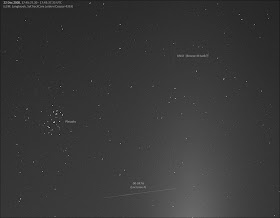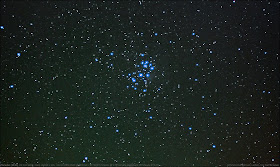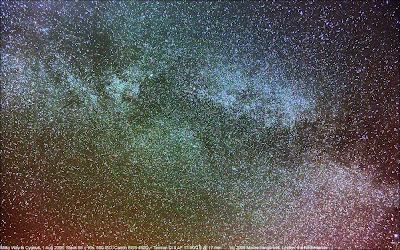The renowned veteran space journalist and former mission control engineer
James Oberg has published another
article about the reasons for the USA 193 shootdown in february (see my detailed coverage of the USA 193 saga
here).
Like in an earlier article, Oberg is strongly opposing suggestions that there is more to this all than the official reason given for the shootdown - the danger of the tank with Hydrazine reaching earth intact. He argues that that reason given was the true and sole reason.
As much as I respect Oberg, I am still not convinced (but then, I am merely only what Oberg calls an "amateur specialist". I observe satellites and determine their orbits. I do not launch them).
First, about disintegration of the satellite. Oberg makes an argument from a comparison with meteorite falls. That argument, at least in the way he presents it, is flawed.
Oberg argues - and he is correct in this!- that it is a widespread misunderstanding that meteorites arrive on earth surface 'red hot'. He points out that in fact they are cool when reaching earth surface, and then tries to argue that they do not heat up during their fall:
Though a thin outer layer is briefly exposed to very hot air, for most of the descent that air is thinner than the purest vacuum inside thermal-shielding thermos bottles.
Now he is correct in this: small meteorites indeed arrive cold on earth surface, and of the object which does reach earth surface, only a thin outer layer has been heated.
But this is only part of the story, and as such the meteorite analogy is a very poor one.
There are two reasons why meteorites arrive cold on Earth. One is that from 25 km altitude, after being slowed down by the atmosphere to subsonic speeds, they stop ablating and enter a free fall that takes minutes to complete. During this phase they cool, much like the air the ventilator in your pc blows over your computer CPU cools your CPU.
A more important factor however is that heat generated during the incandescent phase of a meteorite fall, the result of atmospheric friction when the object still has cosmic speeds, is carried away immediately with the ablating material. It is for this reason that heat generated does not transfer much into the meteorite. This is basically what Oberg points out, but he neglects to tell something which is quite relevant:
that in this process of meteorite ablation, at least 70% (and usually more) of the meteorite ablates and hence vanishes. What reaches earth surface is at best 20-30% of the original mass.The implications for the USA 193 tank, if we properly use the meteorite analogy, is therefore this. Either one of these two things will happen:
1) over 70% of the tank mass ablates and at best 20-30% and probably less of the original tank mass will reach earth surface;
Oberg however argues specifically against the notion of the tank being destroyed by ablation. The alternative option which remains then is:
2) the tank, due to it's special construction, does not ablate. In that case however, the heat dissipation mechanism Oberg brings up in his meteorite fall comparison
will be absent too. In other words:
the tank will heat up in its interior,
unlike a meteorite.
In this case, Oberg's analogy is flawed.
Now, if I understand Oberg's article correctly, modelling (and who am I to question this) of the USA 193 tank entry would have nevertheless suggested the frozen hydrazine to remain intact.
In that case, you can actually question what the real danger is of a solid chunk of hydrazine ice contained in a metal casing reaching earth surface. It will only be dangerous when someone directly handles it (but even then).
Here, we should realize that tanks with -unfrozen!- hydrazine fly through our airspace daily. Most fighter jets contain a tank with hydrazine as an emergency fuel backup. The effects of this falling down on you will not much differ from those of the USA 193 tank falling down on you. Such crashes are not rare. For example, our relatively modest Dutch airforce
lost 32 of its F16 fighters, which carry a hydrazine tank, through flight crashes. Some of these aircraft came down in populated areas (one actually hit a house).
All commercial aircraft carry tanks with fuel too - not hydrazine, but still not pleasant stuff. Chances that one of these tanks will descend on your head - and this happens from time to time- are much larger than that the tank of USA 193 would have. And we don't quite bother about that. So why bother about the USA 193 tank then?
USA 193 was not the first failed fuel-carrying satellite to fall back to earth in an uncontrolled way. Nor will it be the last. In fact, launch failures where final rocket stages fail to fire are common. It will be interesting to see whether future cases will get a similar treatment.
In my opinion, the USA 193 shootdown was done for multiple reasons, and the "danger" of the hydrazine tank is only one of these. It is a convenient one to defend the exercise to outsiders, but not the only reason.
I am quite convinced that other reasons were of equal or even paramount importance in making the decision:
- that USA 193 presented a very convenient target for a practical test of ASAT capabilities (thus also making the money spent on the satellite at least partly pay off);
- that it would prevent new experimental technology falling (literally) into wrong hands;
- and that it was a timely moment to remind China, the US Senate and Congress and the US public that the USA has ASAT capabilities too and that the technology in a wider sense (missile defense) was worth further funding. Note that in April 2008, barely two montsh after the USA 193 intercept, the US Congress
re-examined the status of missile defense of which the used Aegis system is part.
Note: considering the USA 193 shootdown, John Locker's summary and the links he provide are worthwhile reading 














































